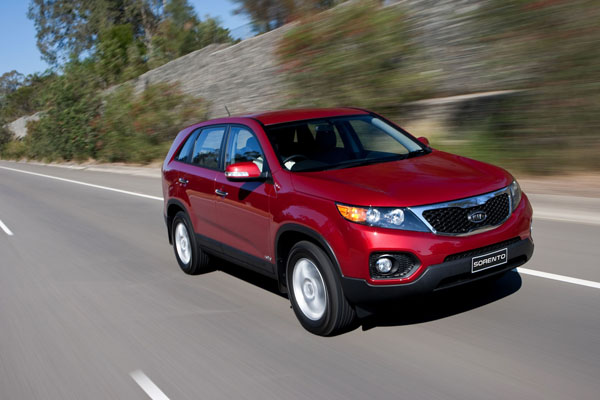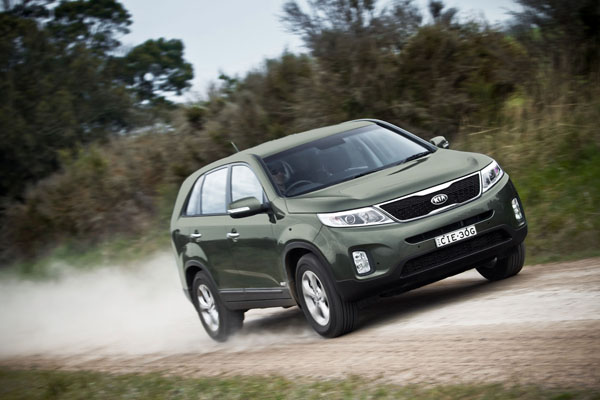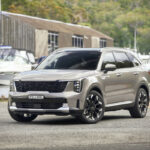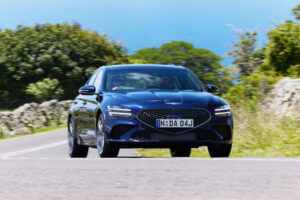Kia Sorento is a medium-large SUV that’s been popular in Australia for many years. The second generation arrived in Australia in November 2009 and uses a monocoque rather than a body-on-chassis setup to provide extra comfort. Like many in this vehicle class the Sorento is a bought by those looking for a station wagon, not a 4WD.
Kia Sorento’s suspension and steering have significant Australian engineering input. This firms it up in road grip without any obvious loss of comfort.
It handles dirt tracks with ease and can be used on the beach if the sand isn’t overly chewed up.
Kia has recently carried out a major update of the Sorento so it seems like a good time to have a look at it as a used car. We will cover it from the monocoque model of 2009 up till 2020.
There were problems with turbo-diesels in latter half of December 2011, resulting in a recall. It’s likely that all were fixed at the time, but just in case check with a Kia dealer or contact the company’s Sydney head office.
A big feature of all Kias is the seven-year warranty. Check that a Sorento you’re considering is covered by this. You’ll probably be asked to pay a bit more, but it’s money well spent.
Five and seven seat models are offered. The front seats are large and support well. The second-row seats can slide back and forward and in their rearmost position provide stretch out legroom.
There is no problem in transporting four large adults in comfort. The rearmost pair of seats and the second-row centre-seat are best left for the kids. However, the rear seats are better than average for this class.
Gen-three Sorento arrived in June 2015 and took the stylish route. The rear end isn’t over sloped in its style, so there’s good luggage space.
Engine offerings are turbo-petrol 2.4-litre four-cylinder, naturally aspirated V6 3.3-litre petrol and 2.2-litre four-cylinder turbo-diesel. The 3.3 wasn’t offered early in the life of the gen-two being examined here, but made a return with the facelifted model of 2012.
The 2009 models have six-speed automatic or manual transmissions, however the manual is only offered behind the diesel engine.
Two and four-wheel drive transmissions are offered with the former driving the front wheels.
Repair work is relatively simple and there’s the sort of underbonnet space that makes life easier for all working under there. Amateur mechanics can carry out light duty work. It’s smart to have a workshop manual beside you. Please leave safety related work to the professionals.
Insurance costs are moderate, reflecting the usually conservative nature of Sorento owners. Costs don’t seem to vary a lot from company to company, but it’s always worth shopping around.
WHAT TO LOOK FOR
The engines should start easily – within a couple of seconds at the latest, diesels are slower to kick over than the petrols, but modern ones aren’t that much slower.
Warning lights on the dashboard that stays on for more than a few seconds may mean serious troubles.
There were problems with turbo-diesels late in 2011, resulting in a recall. It’s likely that all were fixed at the time, but just in case check with a Kia dealer or contact Nissan’s Australian head office.
Automatic transmissions should be smooth in their changes and not take overlong to engage either Drive or Reverse when moved from Neutral or Park.
Underbody damage and signs of sand and salt in the nooks and crannies under the Sorento probably mean it has been playing on beaches.
Light scratches on the bumpers, mudguards and doors created by being pushed through tight bush tracks.
Check the condition of the cabin, particularly the back seats. The cargo area can get knocked about by endless bulky items being crammed in there, then sliding around during cornering.
HOW MUCH?
Budget on spending from $5000 to $8000 for a 2009 Kia Sorento EX; $8000 to $12,000 for a 2010 Si; $11,000 to $17,000 for a 2011 Platinum; $14,000 to $20,000 for a 2013 SLi; $16,000 to $23,000 for a Si; $18,000 to $25,000 for a 2014 Platinum; $20,000 to $28,000 for a 2015 Si; $25,000 to $33,000 for a 2016 Platinum; $28,000 to $38,000 for a 2017 GT-Line; $30,000 to $41,000 for a 2019 Black Edition; and $37,000 to $48,000 for a 2020 GT-Line.
CAR BUYING TIP
If a new model is introduced there can be a rush to trade in older ones. If the dealer’s yard is overflowing with the trade-ins they may offer them at lower prices.
RECALLS: To browse recalls on all vehicles go to the ACCC at: www.productsafety.gov.au/products/transport/cars/












